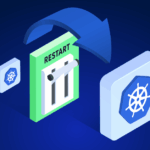
Maximizing Cloud Cost Optimization: Best Practices to Follow
Cloud services provide organizations with flexibility and scalability to optimize their business operations. However, this convenience often comes at a cost, as cloud resources can quickly rack up expensive bills if you don’t manage them efficiently.
A recent Gartner report shows that up to 70% of cloud costs are wasted due to overprovisioning, idle resources, and/or inefficient usage. Additionally, statistics also show that 82% of IT and cloud decision-makers encounter unnecessary cloud costs.
To address these issues, you need to focus on maximizing cost optimization to get the most value out of your cloud resources. In this article, we’ll explain how you can optimize your cloud costs to minimize waste and maximize the value of your investments.
What Does Cloud Cost Optimization Mean?
Cloud cost optimization means finding ways to reduce unnecessary spending on cloud resources while still meeting business requirements. This involves analyzing and adjusting the use of cloud resources to ensure they are being used cost-effectively.
Cost optimization for cloud resources also involves understanding the pricing structure of cloud services and identifying areas where they’re being underutilized. This way, you can reduce your cloud bills and save money without sacrificing performance or productivity.
So, in simple words, cloud cost optimization is about finding a perfect balance between cost savings and performance. It allows you to make sure that your business is getting the most value out of your cloud investments.
Why is Cloud Cost Optimization Important?
Cloud cost optimization is important because it allows you to maximize productivity while minimizing costs associated with cloud usage at the same time. It helps you manage your cloud resources effectively and make sure that you’re paying only for the resources you need.
According to Gartner, 80% of organizations will be unaware of their cloud adoption mistakes and waste 20% to 50% of their cloud spending by 2024.
Therefore, it’s crucial to start implementing cloud optimization strategies today to prevent unnecessary cloud spend. It’ll help you align your cloud usage with business goals and generate greater returns on your investments.
Here are some reasons why maximizing cloud cost optimization is important.
- Improved Visibility into Spend: Optimizing your cloud costs leads to better visibility of your spending patterns. It helps you track and monitor unnecessary spending and increase your business benefits.
- Eliminate Wasted Spend: Cloud cost-optimization allows you to identify areas where you’re overspending and save money for value-added expenses.
- Forecast Spending to Executive Teams: Maximizing cloud cost optimization helps you forecast cloud spending, allocate your computing resources properly, and make better business decisions.
- Improved Productivity for Engineers: Cloud cost optimization reduces the time engineers need to spend on projects to increase their productivity. It allows them to focus on other departments while improving the overall IT infrastructure.
- Competitive Advantage: By using idle resources more efficiently, you can continue driving innovations and stay ahead of the competition.
Best Strategies to Maximize Cloud Cost Optimization
Now that you understand what cloud cost optimization is and why it’s important, let’s discuss the best strategies to achieve that.
1. Find Mismanaged Cloud Resources
The first strategy for maximizing cloud cost optimization is to find unattached or unused resources. These resources include unused instances, unattached storage volumes, and idle load balancers.
Keep in mind that it’s easy to forget to turn off these resources when they are no longer in use, which results in extra expenses for your business.
To address this problem, you should scan your cloud bills. It’ll help you identify charges for resources that you no longer need and get rid of them to minimize costs. You should also shut down/clean up idle instances to maintain your sandbox environments.
It’ll help you save money on the number of instances you use and reduce the amount of time spent managing these resources.
2. Rightsize the Resources
Rightsizing is a cloud cost optimization strategy that involves reviewing and optimizing the size of your cloud resources based on their utilization. It’s important to make sure that your cloud resources aren’t over-provisioned or underutilized, as both scenarios can result in unnecessary costs.
To rightsize your cloud resources, you need to analyze their usage patterns and determine the optimal size that can handle your workload efficiently. You can achieve this by using a rightsizing tool that can optimize the size of your server, database, memory, storage capacity, and graphics.
Zesty is a good example that uses advanced AI technology for the automatic right-sizing of cloud block storage. It means that it can expand and shrink cloud disks to match application needs automatically. It also monitors storage 24/7 to proactively expand disks when more storage is required, preventing “out of space” failures.
It can help you reduce storage costs by up to 70% by making sure that your storage volumes are always optimally utilized. Additionally, it can also relieve DevOps engineers from manually managing disks, allowing them to focus on more critical tasks.
Keep in mind that effective rightsizing of cloud resources can prevent idle instances and over-provisioning to help you save money. It especially comes in handy when you’re using pay-as-you-go cloud environments, such as GCP (Google Cloud Platform), Microsoft Azure, and AWS (Amazon Web Services).
3. Use Heat Maps
Heat maps make for a powerful tool for businesses to optimize their cloud computing costs. They provide you with a visual representation, explaining the utilization levels of different cloud resources. You can use this information to identify underutilized resources that can be shut down to save costs.
This approach can be very effective for cloud resources that you need for specific tasks. For example, you can schedule start and stop times for resources that you need for development purposes, which will stop development servers on weekends and keep them running during weekdays.
It’ll help you streamline the optimization of cloud costs and free up time for IT personnel so that they can focus on more important tasks.
4. Review the Billing Information
Another effective cost optimization strategy is to review your cloud vendor’s pricing and billing information regularly. It’ll provide you with valuable insights into the cost of each service or resource you are using. This way, you’ll be able to identify areas where you are spending the most and take appropriate action to reduce spending.
You can start by analyzing the high-cost services and workflows. After identifying them, you can determine if they’re necessary and/or if there are any other cost-effective alternatives available. It’ll allow you to make informed spending decisions, avoid paying for redundant resources, and optimize your budget.
5. Set the Budget for Each Project Wisely
To control cloud costs, it’s important to set budgets wisely. Keep in mind that setting a budget isn’t just about choosing an arbitrary number based on guesswork.
It’s about involving all parties, including executives, product leadership, and engineering leaders, in the budgeting process. And then set the budget based on the specific packaging and delivery requirements of each project.
A clear budget will help you plan and optimize your overall spending on cloud services and avoid unexpected expenses.
6. Invest in RIs (Reserved Instances)
Investing in RIs is a cost-saving strategy for enterprises committed to cloud services for the long term. While it can help you save a whole lot of money to take advantage of it companies must be willing to make upfront payments and commit to particular instances for a longer time frame.
These limitations make it difficult for many organizations to fully take advantage of the discounts provided by AWS Reserved Instances. However, solutions like Zesty help to offset these financial risks. Assuming the long-term commitment periods on your behalf, they enable companies to more freely access the discounts. Their technology automatically offloads any unused Reserved Instances, helping organizations to cover more of their workloads with discounts, without the risk of being over-provisioned.
Using this tool can help you achieve savings of up to 60% on EC2 costs without any human intervention. Its AI engine continuously analyzes EC2 usage to leverage the best Reserved Instances discounts for your environment, so you can maximize your cloud savings with no additional effort.
7. Invest in Spot Instances
Spot Instances are unused cloud computing resources that service providers sell at a discounted rate through auctions. Investing in these instances can help you reduce cloud computing costs (up to 90% on AWS) compared to on-demand instances.
However, Spot Instances are sold through auctions, which means their availability and pricing vary. So, they’re best suited for workloads that can tolerate interruptions or be terminated quickly. Examples of these workloads include data analysis, testing, and batch processing.
8. Eliminate Shadow IT Practices
Shadow IT occurs when your employees use your company resources, including cloud resources, without authorization/approval. Not only does it increase the cost that you need to pay, but it also creates unaccounted data access and increases security risk.
One of the best ways to minimize these problems is to educate your employees about the dangers of shadow IT. You should have a comprehensive shadow IT policy that outlines the appropriate use of your resources and the consequences of failing to follow them.
Additionally, you can also take additional security measures, such as using antivirus solutions and VPNs for operating systems like Mac or Windows, MFA (Multi-Factor Authentication) for logins, and user management with the least-privilege principle to complement your shadow IT policy.
9. Use a Single Platform to Capture the Big Picture
Using a single platform to capture the big picture means having a unified view of all your cloud resources and data. This helps you to understand your cloud costs better, identify trends, and make informed decisions.
The Zesty platform, for instance, displays key provisioned resources and the degree to which each one of them is actually utilized. Its AI-driven cloud management technology auto-scales cloud resources to match your real-time application demands, which reduces cloud costs and improves productivity.
When you have a unified view of your cloud resources and data, you can make informed decisions that optimize your cloud usage and reduce costs.
Final Words
Cloud services have become an essential tool for businesses to operate efficiently and stay competitive. However, cloud services come at a high cost, which is why cost optimization is important.
The best way to make sure that you’re maximizing the value of your cloud investments is to implement the right cost optimization strategies, discussed in this guide.
It’ll help you incorporate cost optimization into your business strategy to allocate resources more effectively and lead your organization to success.








